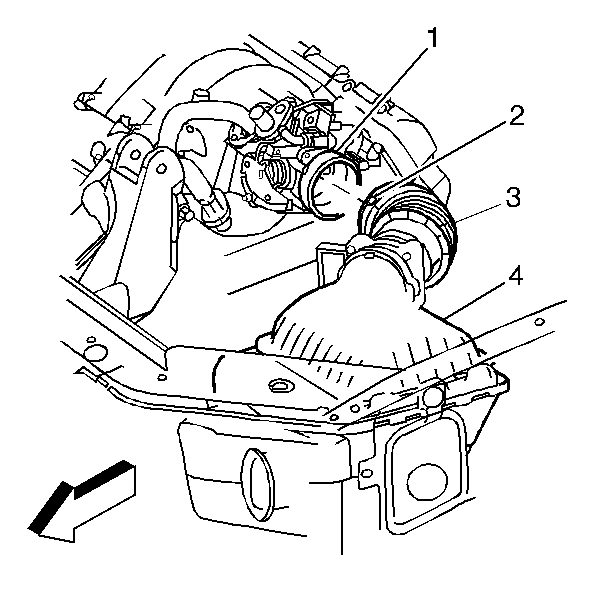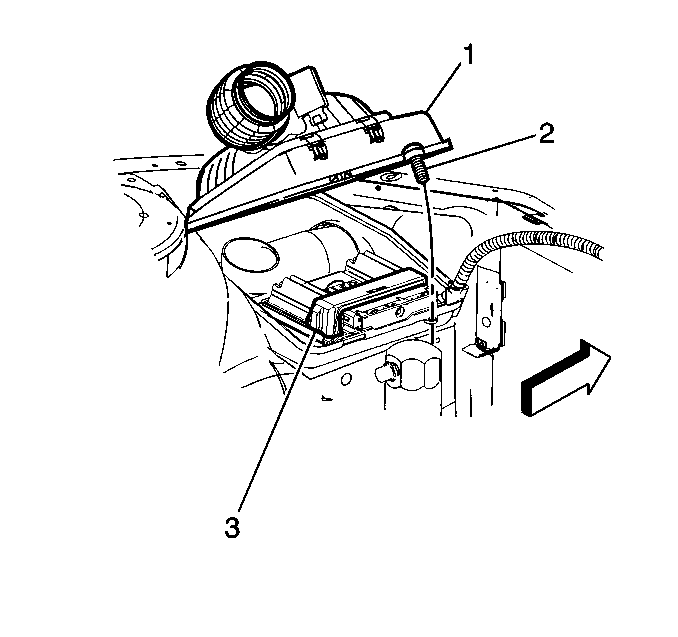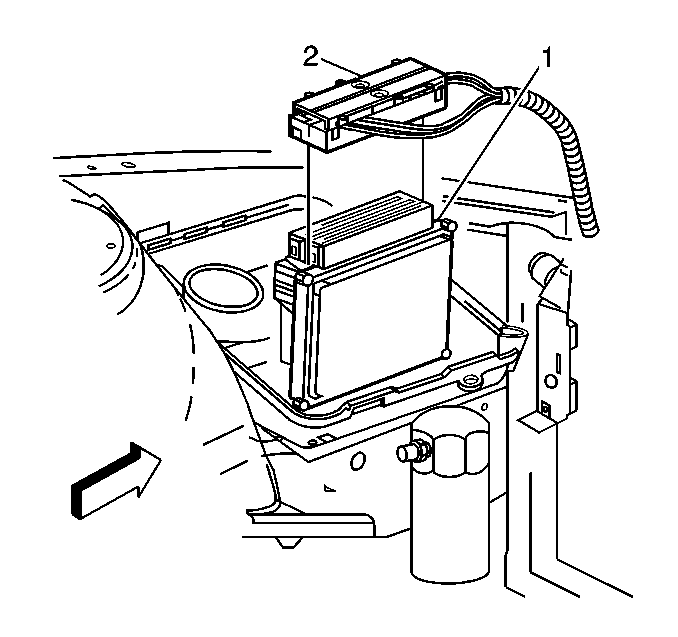Service of the powertrain control module (PCM) should normally consist of either replacement of the PCM or electrically erasable programmable read only memory (EEPROM) programming. If the diagnostic procedures call for PCM replacement, inspect the PCM first to see if the PCM is the correct part. If the PCM is faulty, remove the PCM and install the new service PCM.
The new service PCM will not be programmed. You must program the new PCM. DTC P0602 indicates the EEPROM is not programmed or has malfunctioned.
Notice: In order to prevent possible electrostatic discharge damage to the PCM, do not touch the connector pins or soldered components on the circuit board.
There are no user serviceable parts in this PCM. The PCM should never be opened for any reason.
Notice: Turn the ignition OFF when installing or removing the PCM connectors and disconnecting or reconnecting the power to the PCM (battery cable, PCM pigtail, PCM fuse, jumper cables, etc.) in order to prevent internal PCM damage.
Important: When replacing the production PCM with a service PCM, you must transfer the broadcast code and production PCM number to the service PCM label. DO NOT record the information on the PCM cover. This will allow positive identification of the PCM parts throughout the service life of the vehicle.
Removal Procedure
- Using a scan tool, retrieve the percentage of remaining engine oil. Record the remaining engine oil life.
- Disconnect the negative battery cable. Refer to Battery Negative Cable Disconnection and Connection in Engine Electrical.
- Remove the left strut brace.
- Loosen the band clamp (2) at the throttle body (1), and disconnect the air duct (3) from the throttle body.
- Disconnect the electrical connectors for the intake air temperature (IAT) sensor and the mass airflow (MAF) sensor .
- Loosen the retaining screw (2) for the air cleaner cover .
- Remove the air cleaner cover (1) and lift the PCM (3) from the housing assembly.
- Disconnect the harness connectors (2) from the PCM (1).
- Remove the PCM from the engine compartment.
Important: It is necessary to record the remaining engine oil life. If the replacement module is not programed with the remaining engine oil life, the engine oil life will default to 100%. If the replacement module is not programmed with the remaining engine oil life, the engine oil will need to be changed at 5000 km (3,000 mi) from the last engine oil change.

Caution: Unless directed otherwise, the ignition and start switch must be in the OFF or LOCK position, and all electrical loads must be OFF before servicing any electrical component. Disconnect the negative battery cable to prevent an electrical spark should a tool or equipment come in contact with an exposed electrical terminal. Failure to follow these precautions may result in personal injury and/or damage to the vehicle or its components.


Installation Procedure
- Install the connectors (2) to the PCM (1).
- Install the PCM (3) into the air cleaner housing assembly.
- Install the air cleaner housing cover (1).
- Tighten the retaining screw (2) for the air cleaner cover .
- Reconnect the air duct (3) to the throttle body (1), and tighten the band clamp (2) at the throttle body .
- Reconnect the electrical connectors for the IAT sensor and the MAF sensor .
- Install the strut brace.
- Connect the negative battery cable.
- If a new PCM is being installed, program the EEPROM. Refer to Powertrain Control Module Programming .

Notice: Use the correct fastener in the correct location. Replacement fasteners must be the correct part number for that application. Fasteners requiring replacement or fasteners requiring the use of thread locking compound or sealant are identified in the service procedure. Do not use paints, lubricants, or corrosion inhibitors on fasteners or fastener joint surfaces unless specified. These coatings affect fastener torque and joint clamping force and may damage the fastener. Use the correct tightening sequence and specifications when installing fasteners in order to avoid damage to parts and systems.
Tighten
Tighten the connector fastener to 8 N·m
(71 lb in).


